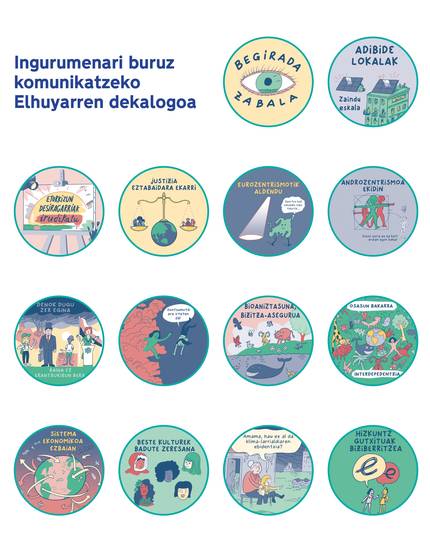1.- Integrate the complementary looks as a complex system
2023/06/07 Elhuyar Zientzia

The planet is facing a global decline: the emergence of climate, the loss of biodiversity, pollution, the waste of natural resources, global social inequality and the crisis of care are some of its symptoms. It is not just an environmental crisis, it is a social, economic and health crisis. We are facing a complex eco-social crisis.
The diversity of origins and impacts makes interdisciplinarity essential to understand the situation and find solutions. The communication of the environmental emergency must integrate all these perspectives: sanitary, environmental, economic, social, technological, philosophical, political, psychological, ecological, ethical…
Socio-economic, environmental, etc. interact and this interaction increases the consequences. This is called syndemia because there is synergy between several epidemics. One example is COVID-19, which brought together health, environmental and social crises, according to the WHO. It was not enough for only medical measures to be taken, but also for social, economic, ecological and political measures to be taken. In the case of the environmental emergency, all of them must also be addressed.
But interdisciplinarity and transversality are not enough. Include the perspective of intersectionality. When making proposals for action in the event of an emergency, the following questions should be asked: To whom are the benefits directed? Who has proposed them? What do they propose for? Do you accuse anyone?
Otherwise, the solutions proposed can be made from a relationship of power, and not from Western culture and vision, from masculinity, heteronormativity, economic wealth and whiteness. Incorporate an intersectional view of how gender, ethnicity, social class, age, sexual orientation, disabilities and other social categories are intertwined to avoid situations of multiple discrimination.

Gai honi buruzko eduki gehiago
Elhuyarrek garatutako teknologia






